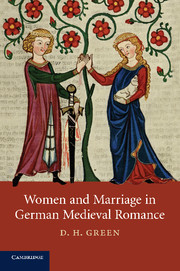Conclusion
Published online by Cambridge University Press: 09 November 2009
Summary
Throughout the texts considered in this book, Latin or vernacular, clerical or secular, there runs a common thread: there is no one medieval view of women, of the relationship between men and women in love and marriage, but as one might expect from human nature a plethora of views, changing over time according to circumstances and the different purposes for which a text may have been written. More commonly women are regarded negatively, but sometimes positively, so that there is no such thing as a universal misogyny in the Middle Ages. This has made it incumbent on us to recognise diverging voices and to listen to dissenting ones.
Already in the Bible and its multiform interpretations in the patristic and medieval periods opinions on these matters are far from coherent, but rather adopt different positions within a continuing discussion, amounting to a lasting ambivalence within Christian tradition about the place of women in the history of salvation. This ambivalence underlies the two episodes in Genesis, the creation of man and the Fall, which are the founding texts of medieval misogyny, for both also give rise to repeated attempts to qualify or deny their antifeminine implications and to argue for some measure of equality between the sexes.
- Type
- Chapter
- Information
- Women and Marriage in German Medieval Romance , pp. 237 - 240Publisher: Cambridge University PressPrint publication year: 2009



